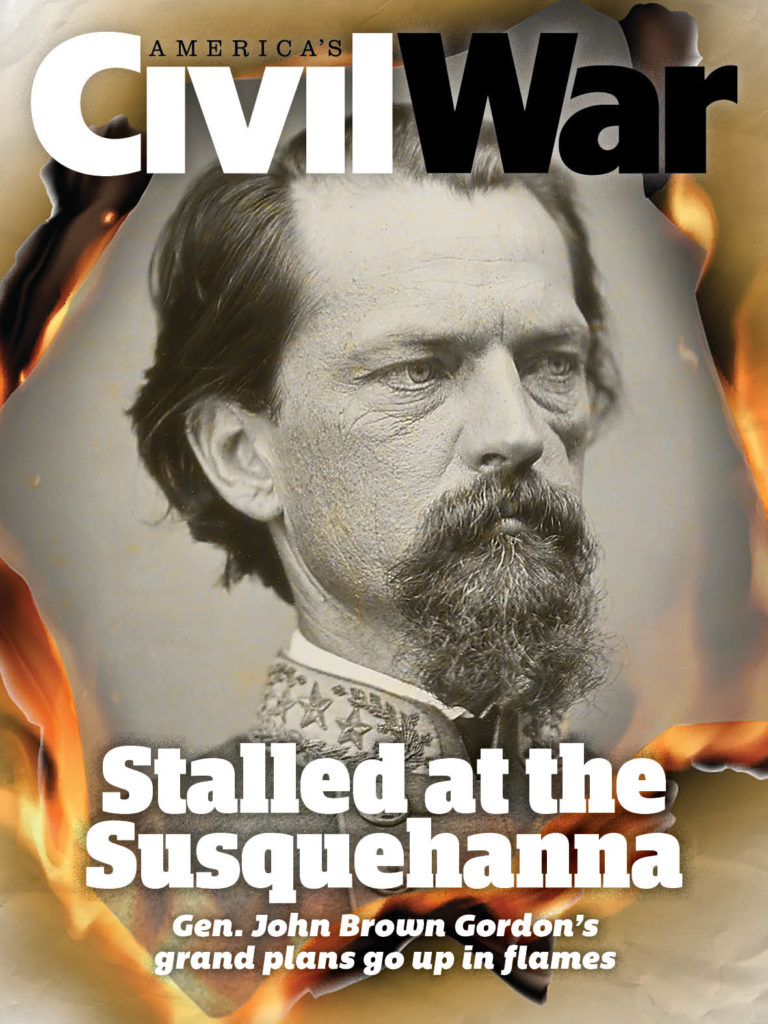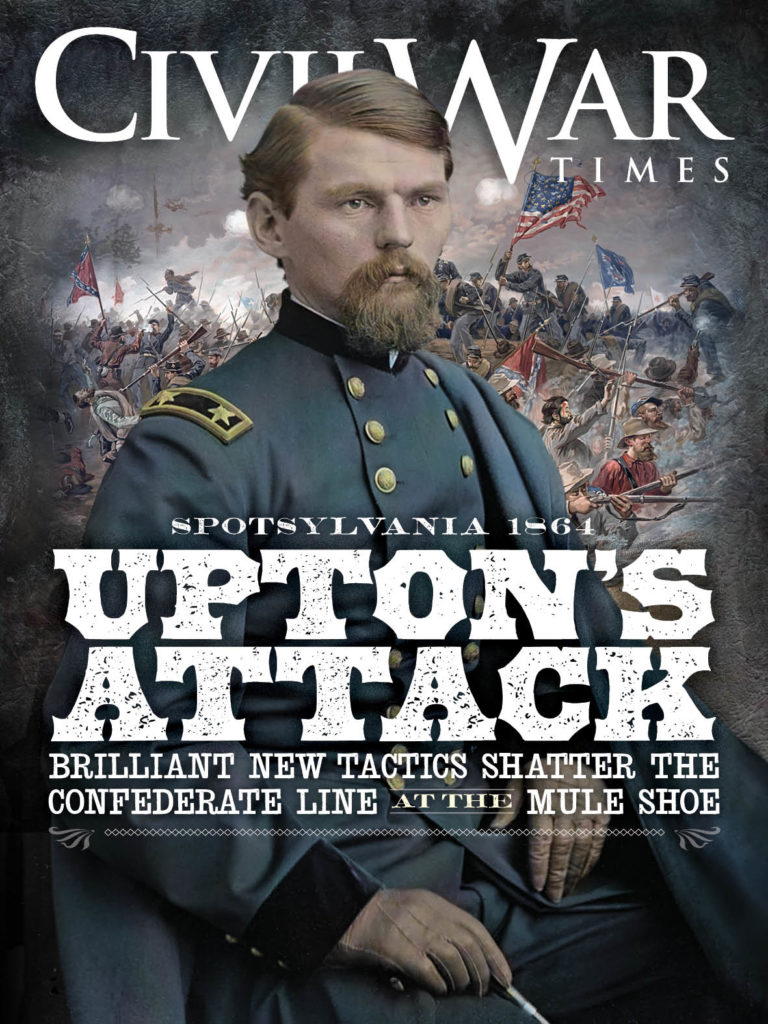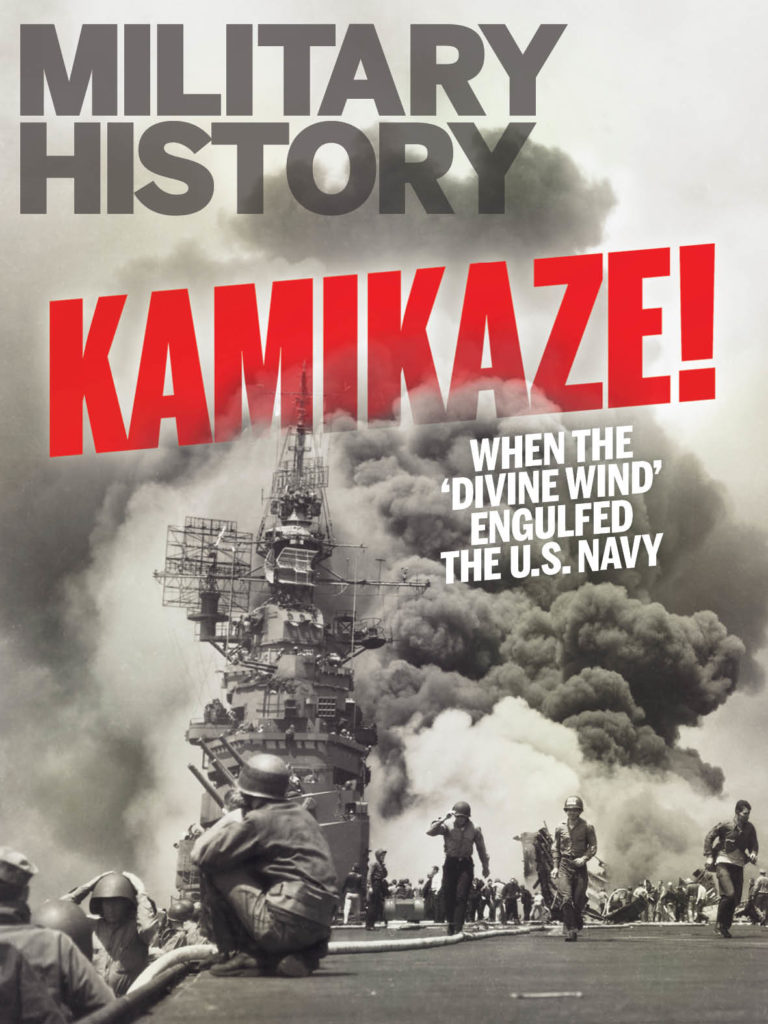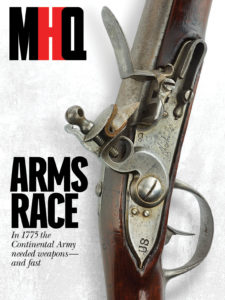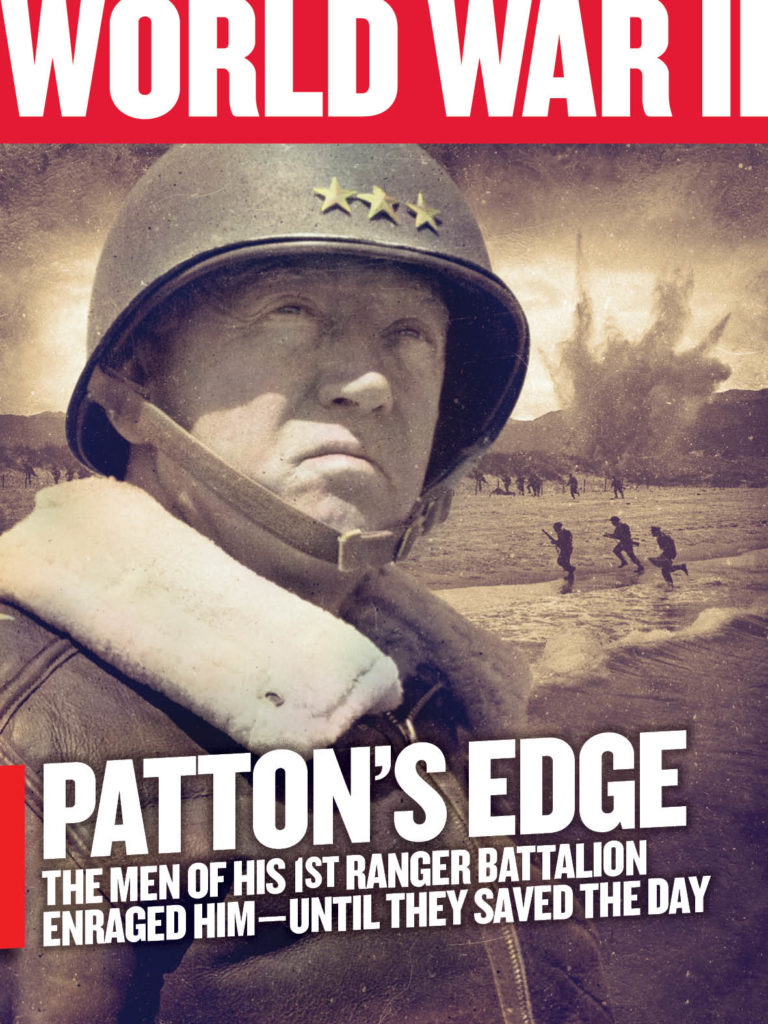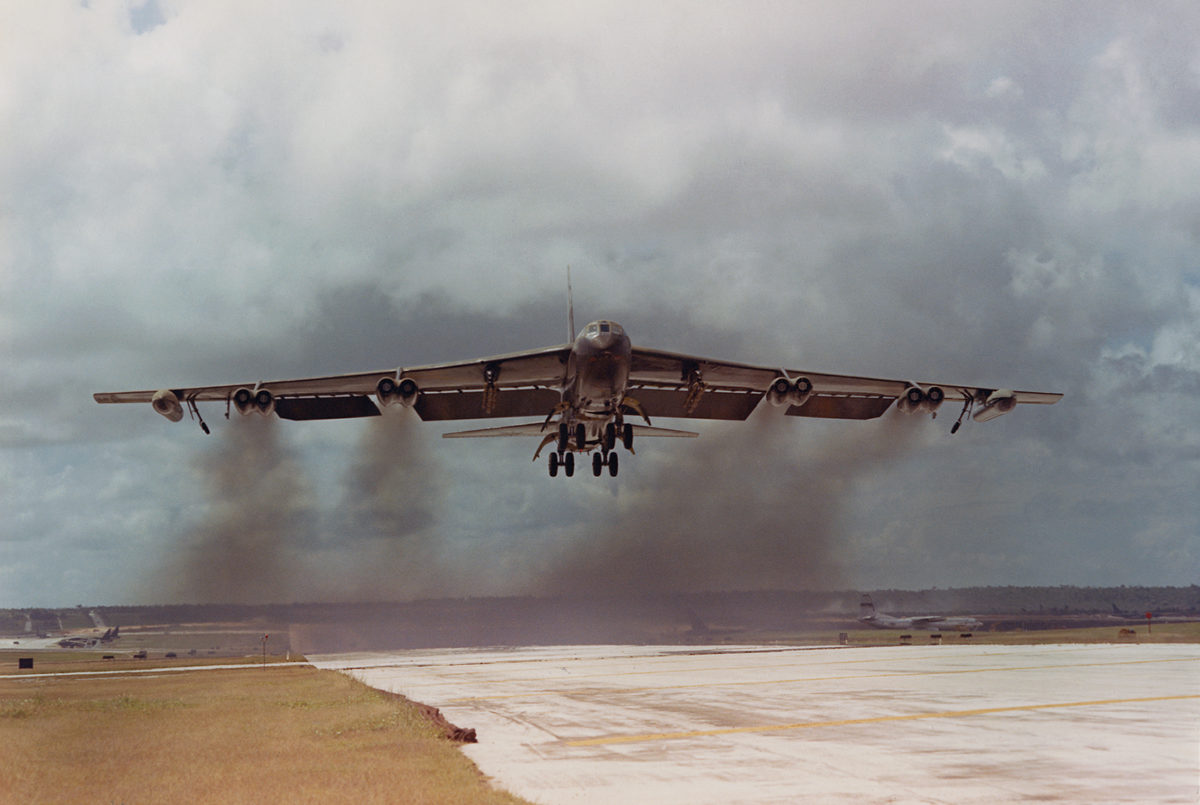At 7:30 p.m. on Dec. 18, 1972, Hanoi time, U.S. Air Force F-111 Aardvark attack aircraft initiated Operation Linebacker II by striking six North Vietnamese airfields. One minute later, EB-66 Destroyer electronic warfare planes started to jam enemy radars, and F-4 Phantom II fighter-bombers began laying corridors of small metal strips of chaff to confuse enemy radar and protect the first wave of B-52 Stratofortress bombers approaching Hanoi and Haiphong.
Completely surprised and blinded, Hanoi’s Air Defense Command aimed its anti-aircraft artillery fire along the routes and altitudes used by B-52s during the Linebacker I bombings of May-October 1972, conducted in response to the North’s massive ground offensive started during Easter weekend.
Surface-to-air missile sites launched Soviet SA-2 Guideline SAMs based on the Linebacker I pattern, only to come under attack from F-105G Thunderchief fighters-bombers code-named “Wild Weasels,” carrying missiles that homed in on the SAM sites.
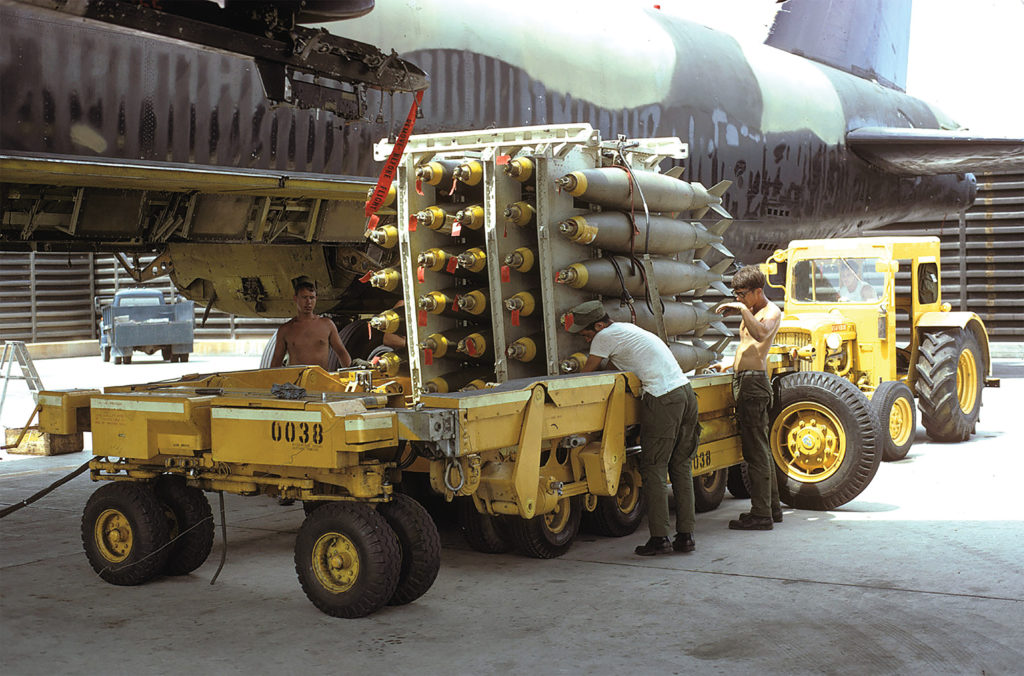
The North Vietnamese launched MiG fighters toward the points where they had intercepted Linebacker I planes. Meanwhile, U.S. Marine Corps aircraft protected Air Force KC-135 Stratotanker aerial refueling planes while the U.S. Navy’s Task Force 77 struck coastal targets.
Striking Hanoi
The Vietnam War’s final bombing campaign had begun. Unlike earlier bombing operations, Linebacker II, Dec. 18-29, was a maximum effort to cripple if not destroy North Vietnam’s capacity to continue the war in the South.
Hanoi’s intelligence services had known since Dec. 16 that a major air operation was imminent but assumed the targets would be south of the 20th parallel, sparing Hanoi and the surrounding area, including the big port at Haiphong. After bombing the Hanoi area in Linebacker I, the U.S. had shifted its bombing strikes to targets below the 20th Parallel and interdiction missions to disrupt supply movements.
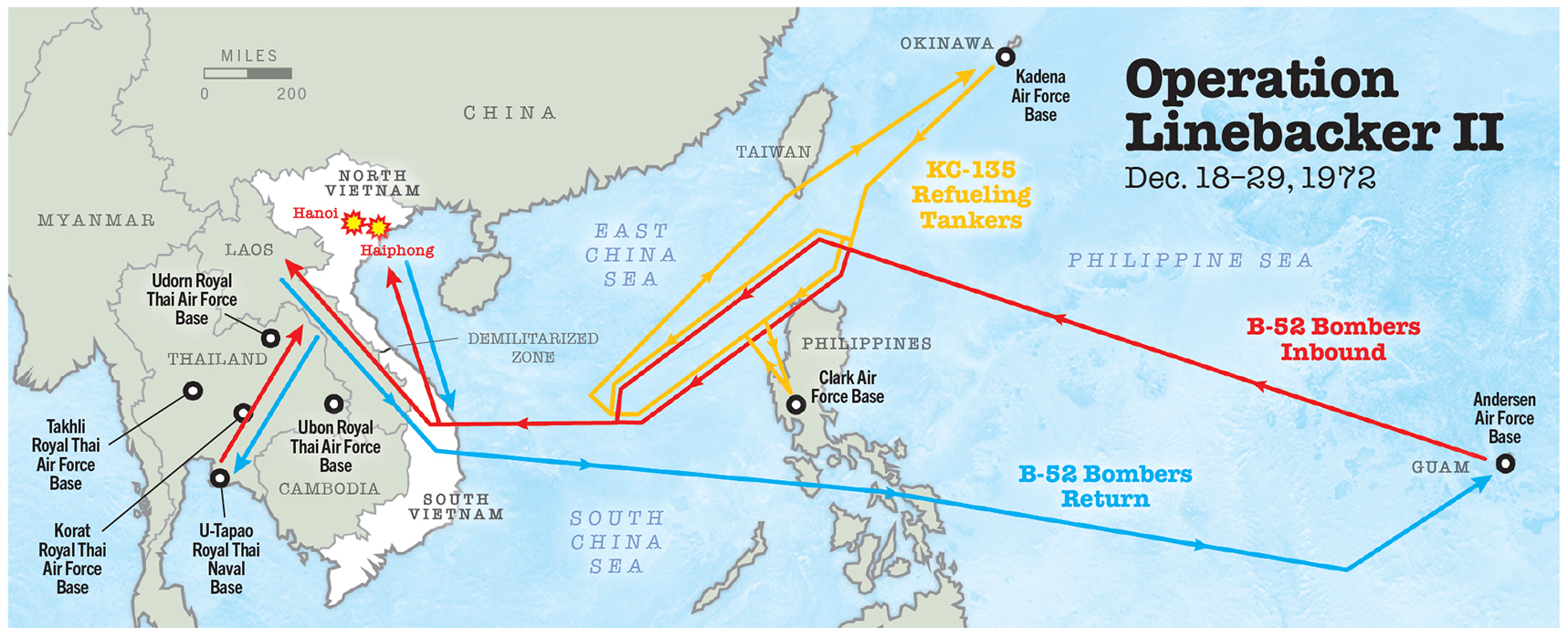
If the big bombers should come farther north, Hanoi’s leaders believed they were prepared. A study of B-52 Stratofortress operations indicated that the bombers tended to abort their missions when they knew they had been detected by the Fan Song SAM fire-control radar that tracked and targeted enemy aircraft.
With that in mind, the defenders moved two SAM and two MiG fighter regiments to cover central and southern North Vietnam, although they retained their anti-aircraft artillery regiments around the capital region in case the U.S. sent fighter-bombers and attack aircraft against Haiphong. They knew the effectiveness of those aircraft would be reduced by December’s heavy overcast and intense rains. Also, the Air Defense Command had spent the past two months rearming and repairing the air defense units depleted by Linebacker I.
Rejecting Peace Proposals
The North Vietnamese did not expect President Richard Nixon to risk the political fallout of striking Hanoi. While Republican Nixon had won a landslide reelection over “peace candidate” Democrat George McGovern, the congressional elections had resulted in a majority determined to pull the U.S. out of Indochina. An anti-war delegation led by folk singer and anti-war activist Joan Baez arrived in Hanoi on Dec. 16 and was scheduled to leave Dec. 23. After the bombing started, the delegation was stuck in Hanoi until Dec. 30.
Hanoi’s contacts in America’s anti-war movement indicated the new Congress would force an unconditional U.S. withdrawal. That convinced North Vietnam’s political leader, General Party Secretary Le Duan, to reject Chinese and Soviet pressure to sign the latest peace proposal, put on the table Nov. 19.
That proposal included a provision Le Duan found unacceptable, an internationally supervised ceasefire. Additionally, it removed a provision Hanoi had proposed in a tentative Oct.8 agreement that called for a National Reconciliation Council, a cover name for a three-party coalition government of selected representatives from the National Liberation Front (Viet Cong), South Vietnamese President Nguyen van Thieu’s government and unidentified “opposition parties.”
Le Duan had delayed signing the October draft peace agreement to await the results of the November elections. Meanwhile, Thieu had been shocked when he learned what was in the Oct. 8 agreement. His objections included sections that set up the three-party coalition government, allowed North Vietnam to retain the territory it captured during the Easter Offensive and opened communications across the Demilitarized Zone separating North and South Vietnam, which would allow Hanoi to reinforce and supply its forces in northern South Vietnam.
Attempts At Diplomacy
On Oct. 19, National Security adviser Henry Kissinger arrived in Saigon to persuade Thieu to sign the treaty and assure him that the United States would enforce the agreement and support South Vietnam. Instead, Thieu denounced the agreement in a broadcast on Oct. 24. His public opposition enabled Le Duan to blame South Vietnam’s leader for the agreement’s failure.
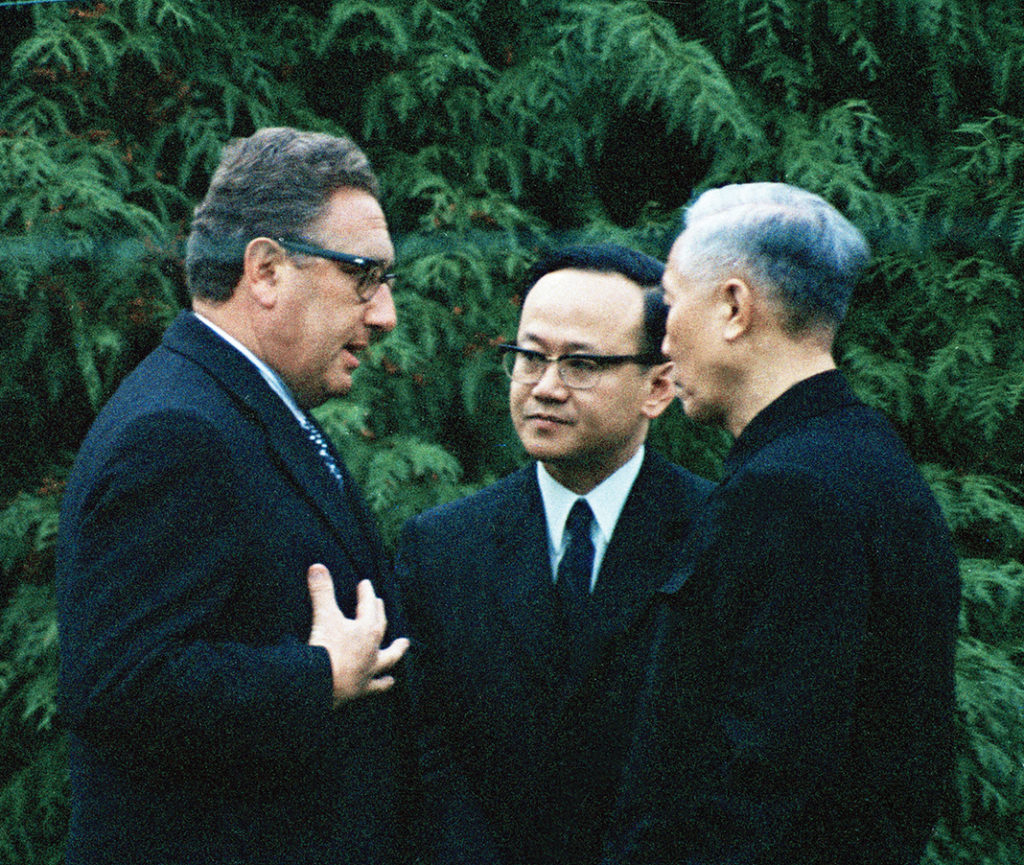
Most observers at the time, and many historians today, blame Thieu’s objections to the Oct. 8 draft peace agreement for the collapse of the peace talks and the bombing that followed.
Le Duan believed Nixon had to have an agreement in place before the new Congress was sworn in on Jan. 3, 1973, regardless of its contents. Nixon shared Le Duan’s assessment of the new Congress but was concerned that America’s postwar credibility would be hurt if he forced Thieu to sign an agreement Saigon found unacceptable. Moreover, unlike Kissinger, Nixon didn’t trust Hanoi’s assurances that it would not reinforce its troops in South Vietnam.
Nixon’s Cabinet largely opposed a bombing campaign along the lines of Linebacker I. Secretary of Defense Melvin Laird and Secretary of State William Rogers argued against it. Joint Chiefs of Staff Chairman Adm. Thomas H. Moorer only supported it if Hanoi violated a signed agreement. Kissinger was worried that it would increase the number of prisoners of war. Only one of the president’s key advisers, deputy national security adviser Alexander Haig, supported sending the B-52s against Hanoi and Haiphong.
Nixon’s Bombing plan
Nixon had met with Moorer and Laird several times in November as the peace talks foundered. He had continued the bombing south of the 20th parallel to maintain the pressure on Hanoi, but North Vietnam’s intransigence convinced him that wasn’t enough.
On Dec. 6, Nixon ordered the Joint Chiefs to establish a working group to plan for strikes on Hanoi. He directed that “the plan should be so configured to produce a mass shock effect in a psychological context.”
Nixon envisioned that responsibility for the air war over North Vietnam would be given to Military Assistance Command, Vietnam, which controlled all land, water and air combat operations inside South Vietnam. The 7th Air Force was MACV’s air component commander and directed all land-based operations of fighter-bombers and attack aircraft.
The Joint Chiefs gave the Strategic Air Command the planning authority for the operation’s B-52 bomber missions, a decision that violated unity of command and turned mission planning over to a staff that considered the Linebacker campaign a distraction from SAC’s main mission: preparing for nuclear war with the Soviet Union.
Nixon warned Moorer that he was giving military leaders everything they wanted and would hold the admiral “personally responsible” if the operation failed.
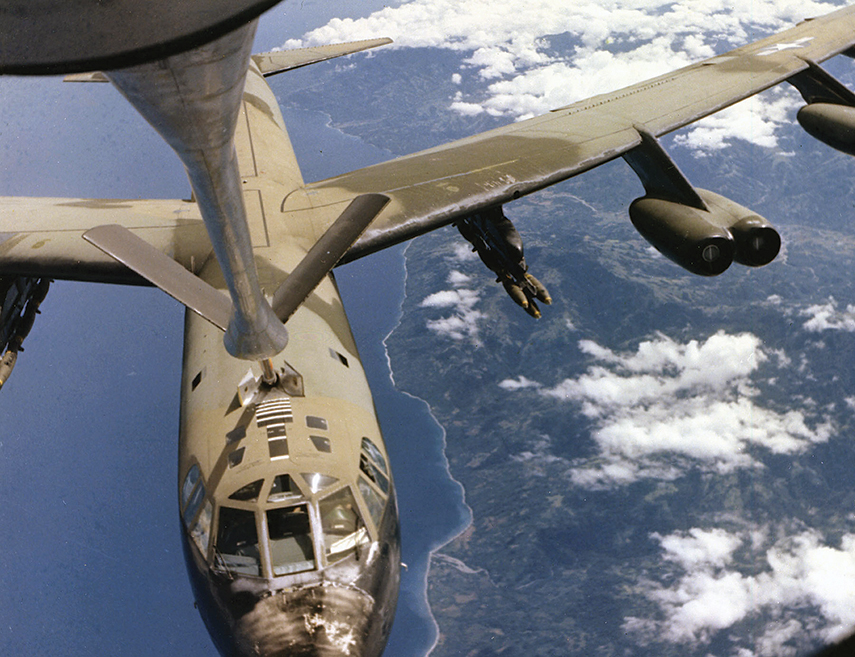
The president wanted a 24/7 bombing campaign to deny the North’s defenders rest and recovery time. Nixon also demanded the bombers press on to their targets despite enemy defenses so the North Vietnamese would “feel the heat until they saw the light.”
“If we renew the bombing,” he explained to Kissinger, “it will have to be something new, and that means that we will have to make the big decisions to hit Hanoi and Haiphong with B-52s. Anything less will only make the enemy contemptuous.”
The B-52s Strike
On Dec. 14, Nixon ordered the plans finalized and one day later alerted all forces to be ready for three days or more of maximum effort. He approved the final plan on Dec. 15, with the attack to start on Dec. 18, one day after Congress recessed for Christmas break. That morning Navy aircraft from Task Force 77 seeded minefields in Haiphong Harbor’s approaches.
About 4:30 p.m. North Vietnamese intelligence reported that B-52s had taken off from Guam. They intercepted a radio call at approximately 7:30 p.m. from a Navy plane patrolling ahead of the B-52s and warning them to turn south. That convinced the Air Defense Command that the B-52s were going to strike south of the capital region. The B-52 pilots, however, ignored the “warning” and stayed the course.
Naval aircraft struck North Vietnam’s coastal radar and SAM sites, followed almost immediately by Air Force F-111 Aardvarks hitting six MiG airfields. The surviving radar stations were blinded by jamming and chaff clouds. By 10 p.m., the Air Defense Command realized that Hanoi was the target area, but it was too late. North Vietnam’s defenses were quickly overwhelmed. Confused, the defenders launched fighters to intercept the flight paths the B-52s used in Linebacker I, and anti-aircraft artillery fired barrages along those same flight routes. Unfortunately for Hanoi, the B-52s were flying different routes and at 32,000-34,000 feet, rather than the 14,000 feet used in Linebacker I.
Each B-52 wave was supported by eight F-105 Wild Weasel SAM suppression planes, 20 F-4 Phantom II fighter-bombers and two chaff corridors, about 60 miles long and 5 to 7 miles wide. The B-52s struck Radio Hanoi, two airfields, the Kinh No repair yards and the Yen Vien rail yard. The airfields and rail yards were nearly destroyed, and Radio Hanoi was heavily damaged.
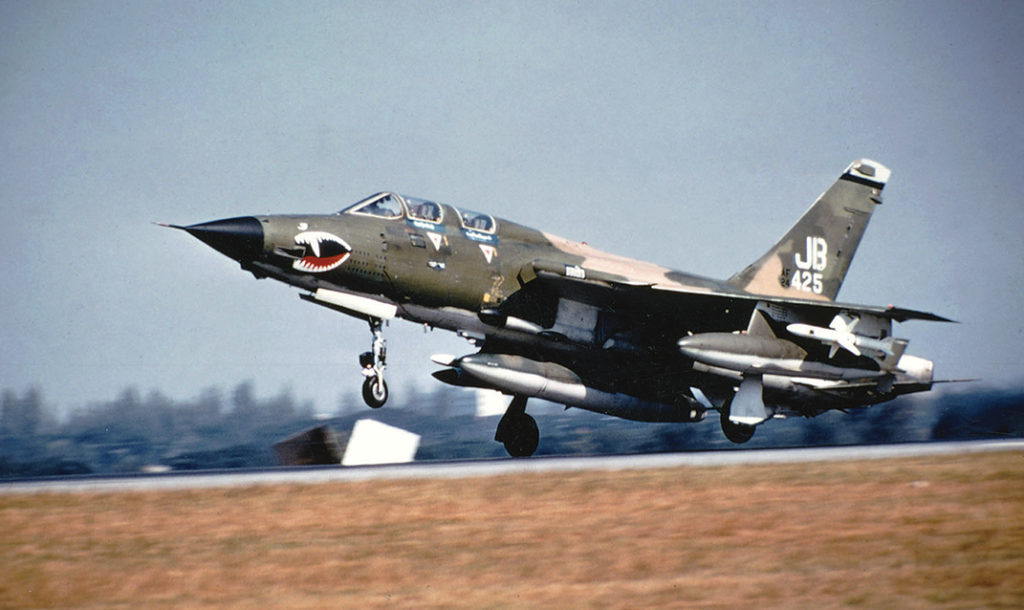
Despite those successes, the results also revealed weaknesses. Aircraft targeting Hanoi’s air defense system, especially Wild Weasel SAM hunters, were spread too thin. The 7th Air Force asked SAC to reduce a four-hour separation between waves because the long interlude was forcing its aircraft to launch and sustain multiple chaff reseeding and radar jamming efforts.
Also the decision to have each wave fly the same pattern enabled the defenders to simply fire missiles along the predicted route. Additionally, SAC required planes to use the same post-strike turn point that forced them to turn into the jet stream, decelerating an aircraft as it was about to be engaged.
American Bombers downed
The 8th Air Force, which had tactical command of the B-52s on Guam, recommended that SAC change its tactics to keep the North’s defenders off-balance. SAC planners rejected the recommendations, saying it was too late to change their plans.
Hanoi, however, had learned the Americans’ tactics and adjusted accordingly. The North’s Air Defense Command plotted the B-52 routes and repositioned its SAM sites to concentrate on turn points and the bombers’ target approach routes. Search radars fed target data to the air defense sites so the Fan Song fire control radars did not have to be activated until a few seconds before the missile launch. The defenders established SAM “engagement boxes” to fire missiles manually in concentrated barrages.
The 129 B-52s that flew the first night faced 174 SAMs, which shot down three bombers and damaged two. However, no B-52s were lost to MiG attacks—in fact, one B-52 tail gunner claimed a MiG-21. Anti-aircraft artillery downed an F-111. In the second day’s raid by 93 B-52s, none were lost, convincing SAC planners their tactics were sound.
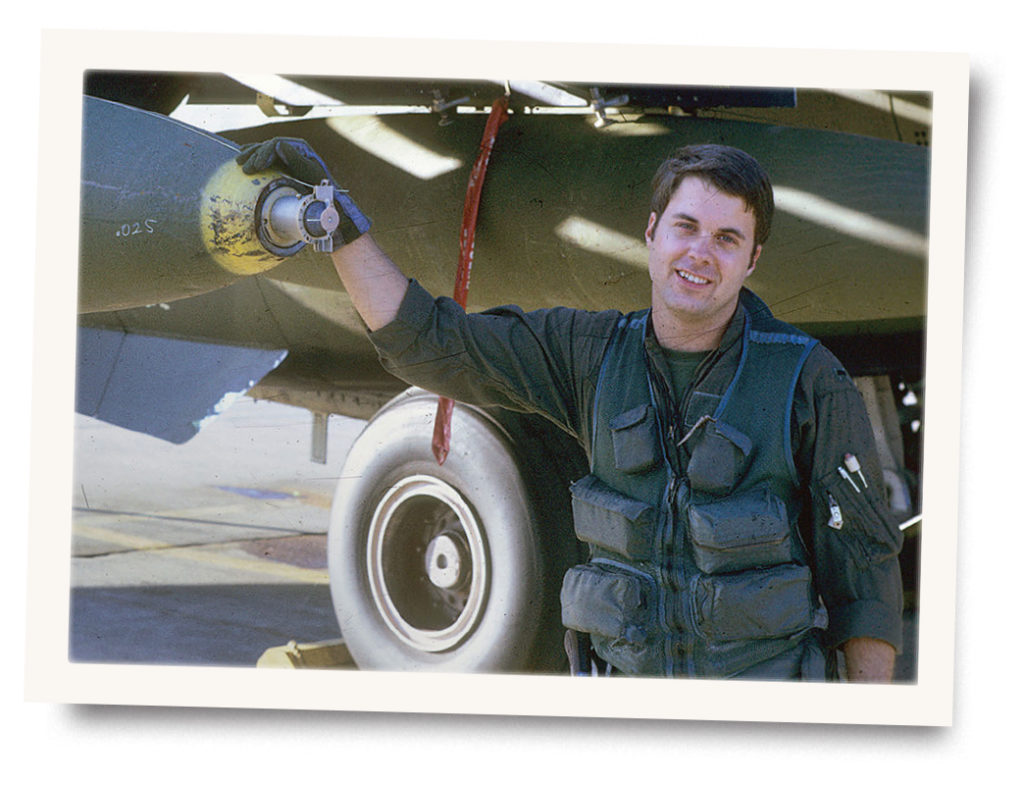
On Day Three, six B-52s were downed. Only the second of the three bomber waves returned home unscathed. Le Duan, his confidence in his air defenses restored, remained steadfast, still believing the Americans would fold first.
Nixon, pushing aside the poor results and criticism from the anti-war delegation in Hanoi, ordered three more days of bombings.
SAC and the Pacific Air Force Command reevaluated their tactics. B-52Gs were prohibited from flying over the North because of their less powerful electronic radar jamming equipment and smaller bomb loads. The Guam-based B-52Ds were also excluded because of the longer flight time. That resulted in smaller raids of 30 B-52Ds from U-Tapao Royal Thai Navy Airfield that were comparatively easier to protect.
No Letting Up
Unfortunately for them, SAC did not change its flight tactics. Day Four’s raid struck three targets but lost two B-52Ds to SAMs. SAC shifted to Haiphong to avoid Hanoi’s denser defenses. No B-52s were lost on Day Five, Dec. 22. However, one stick of bombs overshot Hanoi’s Bach Mai Airfield and hit Bach Mai Hospital, killing 28 hospital personnel and a still-unconfirmed number of patients.
Meanwhile, the North’s focus on downing the B-52s benefited U.S. fighter-bomber operations. Although not thoroughly appreciated at the time, those Air Force, Navy and Marine aircraft faced lighter defenses during the day because Hanoi was resting its air defense teams to engage the B-52s. Fighter-bomber sorties exceeded 100 a day, and losses were much lower than in Rolling Thunder or Linebacker I. Bombing effectiveness also improved.
Nixon instituted a 36-hour bombing halt on Dec. 25, a pause that both sides used to reevaluate all aspects of their operations. SAC transferred planning and operational authority to the 8th Air Force on Guam, tightening the operational structure and improving coordination.
Le Duan interpreted the pause as a victory, much like earlier bombing halts. But it was actually a pause for the flight crews. Nixon wanted a massive attack on Hanoi starting on the night of Dec. 26 with no letting up.
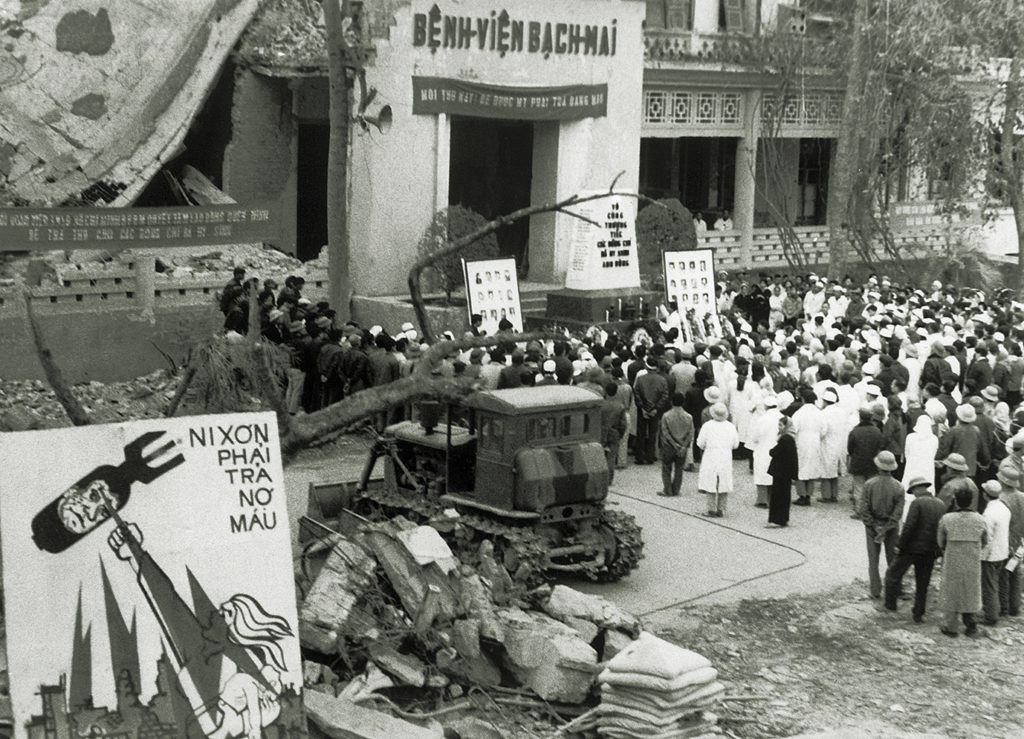
Incorporating lessons from Linebacker I and suggestions from B-52 crews, the 8th Air Force decided there would be no more long lines of bombers following identical routes to their targets. The bombers would fly in four waves, each compact and coming at Hanoi from a different axis and exiting via different routes.
The Thailand-based aircraft would recover in Guam and the Guam-based aircraft in Thailand. As the four waves approached their targets, they split into seven serials of varied size to attack 10 targets. Seven targets were hit simultaneously. Each wave flew a separate route at a different altitude. The compressed waves enabled the Navy and Air Force fighters and jammers to concentrate their attacks against radar and SAM sites. F-111s joined the attacks on SAM sites. Twelve of the North’s 32 SAM sites were put out of action.
The chaff corridors were denser, and instead of 60 to 90 minutes of exposure to enemy defenses, each wave was in and out in under 15 minutes. Although two B-52s were lost on Dec. 26, the vast majority of the bombers were able to remain within the chaff corridors, and the varied routes confused the defenders. The North Vietnamese fired their SAMs along the old routes and turn points. The MiGs got lost and had to search for their targets.
Paris Talks Resume
The fighting consumed more than 10 percent of the SAMs, and Hanoi was worried about resupply. About 800 missiles were in storage, but they needed assembly and delivery to the SAM battalions. The storage depots were also under attack. Two were destroyed on Dec. 26. Henceforth, SAM launches were rationed and their use limited to engagements with B-52s.
Le Duan realized that Nixon wasn’t going to ease up and more bombs were likely to drop. The effectiveness of North Vietnam’s air defenses was declining rapidly. Le Duan worried about his own support within the Politburo if future raids proved equally successful. On Dec. 27, he sent a message to Nixon saying he wanted to resume negotiations on Jan. 8, 1973. Nixon told Kissinger to propose Jan. 2.
The bombing continued for three more days. North Vietnam’s last air defense success came on Dec. 28 when a SAM downed a B-52. The Dec. 29 raids reported few SAM launches and suffered no losses. Linebacker II officially ended at 6:59 a.m., Hanoi time on Dec. 30. Le Duan had agreed to resume the Paris talks on Jan. 2.
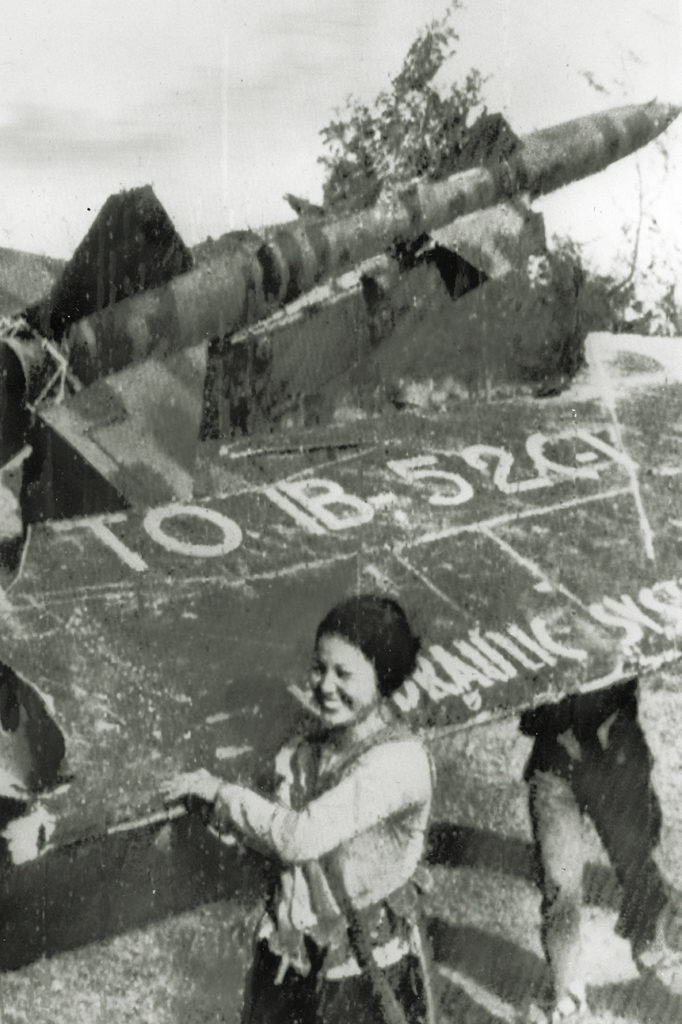
In total, 2,003 strike sorties into Vietnam delivered 20,237 tons of ordnance against 59 targets in North Vietnam. B-52 bombers delivered 75 percent of the tonnage dropped (15,237 tons) in 729 sorties, while fighter-bomber and attack aircraft garnered 25 percent (5,000 tons) in 1,274 sorties—769 Air Force and 505 Navy/Marine fighter-bombers. Half of the Navy/Marine sorties (277) were flown at night.
North Vietnam fired between 289 and 487 SAM missiles against the bombers, downing 15, damaging four beyond repair and eight later restored to service. The losses of fighter-bombers and attack aircraft were lighter, with the Navy and Air Force each losing five and the Marines two.
In aerial combat engagements, Air Force fighters downed two MiG-21s, the Navy one and B-52 gunners one confirmed, possibly another. North Vietnam’s rail yards received half of the bomb tonnage. All of the North’s industrial facilities, rail yards and hubs, 80 percent of its electrical generating capacity and every major military facility had been destroyed, as had two-thirds of the SAM storage and assembly inventory.
Shortfalls
However, the campaign revealed several command and planning shortfalls beyond SAC’s rigid flight schedules, which simplified the planning process but also aided enemy defenders.
For one, there was the failure to consider the North Vietnamese air defense’s Achilles’ heel—its SAM supplies. Linebacker II planners ignored Hanoi’s SAM storage and assembly units until the final three days. Destroying those facilities early on would have reduced the missile threat. The 8th Air Force’s planners, when they got more authority during the Christmas pause, addressed that oversight, proving what a professionally planned air campaign can achieve.
The Paris peace talks resumed on Jan. 8, and an agreement remarkably similar to the October draft was signed on Jan. 27. It differed only in modifying the requirements for a National Council of National Reconciliation and Concord. The October version would have brought an unidentified third party into a Saigon government consisting of Thieu and the Viet Cong.
In the final agreement, the two South Vietnamese parties were required to establish a three “segment” reconciliation council to oversee implementation of the agreement and national elections. “Segment” was not defined. North Vietnamese forces retained the territory they had captured up to that point and permission to resupply them via the DMZ and other means.
In Hanoi’s sarcastic view, the bombing drove the North to sign an agreement that contained all of America’s concessions. Even though Le Duan was the one pleading for a resumption of the talks, Nixon was in no position to ring any more concessions out of the communists. Both knew that Congress was ready to prohibit further U.S. military action in Vietnam. There would be no more bombing, and absent that leverage, Le Duan had no incentive to compromise.
The 591 POWs held by North Vietnam were released and brought home by April 4, 1973. The U.S. turned over millions of dollars of military equipment to South Vietnam, but that did not include the extensive logistic support and supplies required for the South to fight as its forces had been trained.
Neither Saigon nor Hanoi conformed to the agreement. Le Duan rebuilt and deployed his forces over the next two years. He launched an offensive in January 1975, pausing after the initial advances to measure the U.S. response. Seeing none and noting the reduction in funding to resupply South Vietnam, Le Duan ordered the final drive that conquered the South on April 30, 1975. The last South Vietnamese resistance ended three days later.
Linebacker II demonstrated that a properly planned and employed strategic bombing campaign can achieve military objectives to deliver political pressure. But it also showed that a well-trained and equipped integrated air defense force can inflict heavy losses on an inadequately prepared or poorly employed air attacker.
The U.S. enjoyed air superiority over North Vietnam throughout the war, but at an unnecessary cost. Before Linebacker II, America’s leaders made no sustained attempt to crush North Vietnam’s air defenses. Le Duan’s memoirs show he interpreted Rolling Thunder’s bombing halts not as gestures requiring reciprocation from him but as opportunities to rebuild his forces and continue the war. Linebacker II changed his calculations. However, it came seven years too late to ensure South Vietnam’s survival as an independent nation.
Carl O. Schuster is a retired Navy captain with 25 years of service. He finished his career as an intelligence officer. Schuster, who lives in Honolulu, is a teacher in Hawaii Pacific University’s Diplomacy and Military Science program.
This article appeared in the Winter 2023 issue of Vietnam magazine.
historynet magazines
Our 9 best-selling history titles feature in-depth storytelling and iconic imagery to engage and inform on the people, the wars, and the events that shaped America and the world.

